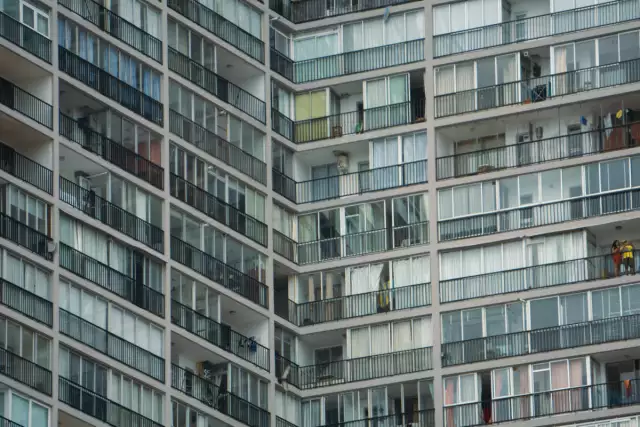How to Handle a Tenant Who Wants to Sublet
As a real estate investor in 2022, what do you do when you find out your primary tenant wants to sublet your property without your approval?
Table of Contents
Landlords allow subleases in their rental properties for many reasons. In most cases, they want to bridge the gap between a long vacancy period and a broken lease. However, there are also situations where tenants won’t talk to you about it beforehand.
Many landlords are confused about the next step to take once they find out that a tenant is subletting without their approval. They feel they’re at crossroads since they want to keep their property occupied yet want to do things the right way. Handling such an issue earlier is essential to avoid legal problems down the road.
On the tenants’ side, many do it because they don’t realize the legal implications they create for landlords when they sublet illegally. In today’s article, we’ll look at a few options for you when you realize your tenant wants to sublet a room without your approval.
As usual, let’s start with the basics:
What Is Subletting?
Subletting, or subleasing, refers to when a tenant leases their current rental out to another tenant. The subtenant takes over the entire property or part of it for an agreed period of time. The subletter also pays part of the rent or the full amount and may also take up full liability depending on the agreement.
If the original tenant remains with the liability, they become accountable if the subtenant doesn’t pay rent on time, causes damage to the property, or breaches the sublease agreement.
Generally, the terms and structure of a sublease will differ depending on the situation. While a standard sublease will be used by most tenants in most cases, others will come with some variations based on the circumstances.
When it comes to the rules and regulations of subletting, some states don’t mention subleases at all and leave all the terms up to the lease agreement. Other states impose specific rules governing rental property subleasing.
Types of Sublets
There are two types of sublets:
Related: What Is a Sublet: The Ultimate Beginner’s Guide
Why Your Tenant Wants to Sublet
We just briefly looked at some causes of subletting an apartment in the section above. However, we need to break down the causes further to understand what you can do in specific situations.
Primary Tenant Needs to Relocate
It is one of the most common reasons why subleases happen. Many tenants often accept job offers that are miles and miles away from where they live, leaving them with no option but to relocate. Anyone would be willing to move to a different location for their dream job.
Millennials are, in fact, renting out properties intentionally instead of becoming homeowners due to the flexibility. They want to be able to pick up their belongings and move out fast without worrying about selling the homes first.
While your lease agreement may not allow subleasing in any circumstance, such scenarios are more common than you’d think. The best option for you is to work with the tenant instead of allowing them to sublease. It is why it’s important to include a break-lease fee in your lease agreement. Generally, a break-lease fee is usually two months’ worth of rent.
However, including such a fee isn’t always ideal. Most tenants won’t agree to the new terms. This is where allowing your tenants to find their replacements comes in. Allowing them to do so relieves you of a lot of tasks, such as advertising and property showing, off your shoulders. You can continue with your daily tasks without worrying too much.
Such an arrangement will guarantee a smooth tenancy transition without vacancy gaps or turnover.
Temporary Relocation
Temporary relocation often leads to short-term subleases. If you own rental property near a university or college, you’ll see such a situation quite often. The nature of the academic calendar means that most students will be looking to sublet the properties when they’re not around for around three months or more, such as during summer breaks or co-op programs.
The same process described above applies in this situation. If you don’t want to allow a sublease, you can transfer the lease to another tenant and then transfer it back to the primary tenants once they’re back.
This type of lease transfer is easier to handle since the primary tenant doesn’t have much to lose when they return in a few months. In short, you don’t have to charge a break-lease fee.
Book My Demo
How to Handle Subletting
So, should you do a sublet for a tenant who wants to move?
In an ideal world, your primary tenant moves out once their lease expires, a new tenant moves in, and you continue receiving your rental income without any major hiccups. In the real world, however, anything can happen at any time.
Here’s how to handle a tenant who wants to sublet with other roommates:
Screen Your Subtenants
When you agree to sublease your rental property, your primary tenant is responsible for screening the subletter. However, just like every other tenant who lives on your property, you have the right to ensure that they’re responsible and reliable.
Every subtenant must go through the same tenant screening process all tenants go through. It is crucial since you ensure that only vetted and approved people are living on your property. If any tenant doesn’t agree to it, you have a right to cancel the sublease.
Your tenants should recognize that you have the final say about all subtenants who want to sublet.
Tenants Must Seek Your Approval
Any tenant who wants to sublease your property must seek your permission. Make sure you include this clause in the lease agreement to avoid any issues in the future. The more formal this process is, the more your tenants recognize how seriously you take the subletting process.
Be Clear on the Payment Process
One of the essential aspects of the subletting process is the rent payment process. You want to ensure that the subtenant pays the rent on time and uses the proper channels. Be clear on whether the subtenant pays you directly or pays the rent to the primary tenant, who, in turn, submits the payment to you. Also, be clear on the date it should happen. Again, include this clause in the sublease agreement.
Related: What to Do When a Tenant Has a Late Rent Payment
What If a Tenant Wants to Sublet Without Your Approval
Now that we’ve covered the basics and seen some circumstances that may influence tenants to sublease apartments for rent, what would you do when you find out your tenant wants to sublet for a year without consulting you?
First, if you don’t allow subletting in your properties under any circumstances, you must avoid the situation by making it clear in your lease agreement. Use concise language in the clause to avoid any ambiguity. It gives you and your tenants a clear direction should this happen.
That said, here are some options for you should you find yourself in this situation:
Confirm With the Subtenant
Firstly, you want to confirm that the subtenant isn’t house-sitting for the primary tenant when they’re away. Talk to both the tenant and the subtenant. If the tenant is indeed subleasing, find out when the sublease commenced and the terms involved in the agreement.
In some cases, the subtenant isn’t aware that the primary tenant isn’t the landlord. In this case, it may be unlikely that the issues will be resolved as you want them. It is a situation you want to avoid as a landlord.
Speaking to the subtenant will be instrumental in helping you determine how to move forward depending on the situation.
Enforce Your Policy
If you had a clause in the lease agreement prohibiting subletting, you may go ahead and enforce the agreement. You can send an official notice for them to comply or vacate your property.
Subletting your rental property without your permission is ground enough for eviction. However, you don’t have to necessarily evict them. You should try as much as you can to find a common ground for all parties involved.
Sending your primary tenant an official notice to comply with the lease agreement is a good starting point. If they fail to comply within a few days, you can go to the next step. It will involve filing an eviction notice or pursuing legal action.
Let Them Be
While this isn’t a recommended course of action, some landlords simply let their tenants be. If you find out that your primary tenant has been subletting their extra bedroom for, say, three months without any issues, you can allow them to continue with their arrangement.
If you let this pattern continue, we encourage you to stay cautious. In other words, draft a formal agreement to prevent any issues in the future.
In whichever course of action you choose to follow, the key is to find a good deal for everyone, instead of being too strict with your tenants. If you’re too rigid, your tenants are unlikely to be transparent. You are better off finding common ground rather than having strangers living on your property or spending a lot of money and time filing an eviction notice or going to court.
Laws Surrounding Subletting
If you’re investing in the housing market 2022, you need to know that many states have laws and regulations in place to govern subletting. Such measures have been put in place to avoid potential risks in the future.
Subletting in most states is legal, while other states prohibit it outright. Others don’t allow subletting only in some conditions. You may start by checking whether it’s legal in your state and city.
Here are some subletting laws in some states:
Related: Squatters Rights: A Guide for Property Managers
Damage to Property
While subleasing is legal in some states and cities, the primary tenant is responsible for rent payments and also liable for any damage unless the sublease agreement states otherwise. If the subtenant doesn’t pay the rent or causes extensive damage to the property, the landlord can take legal action against the primary tenant.
To protect yourself from such a scenario, you are allowed to ask for a security deposit from the subtenant.
Landlords can ask for a security deposit from the primary tenant to cover potential damage to the property caused by the subtenant.
Final Thoughts
Subletting comes with both benefits and downsides for the tenant and landlord. Add a clear clause addressing subleasing in your lease agreement to direct you if you have a tenant who wants to sublet your rental property. If they do it without your approval, ensure that you find an amicable solution for all parties involved.
Mashvisor provides real estate investors like you with accurate and reliable tools to make smart business decisions. Our platform helps you calculate your rental property’s ROI and cash flow.
Sign up to Mashvisor today and start your 7-day free trial, followed by 15% off for life.







